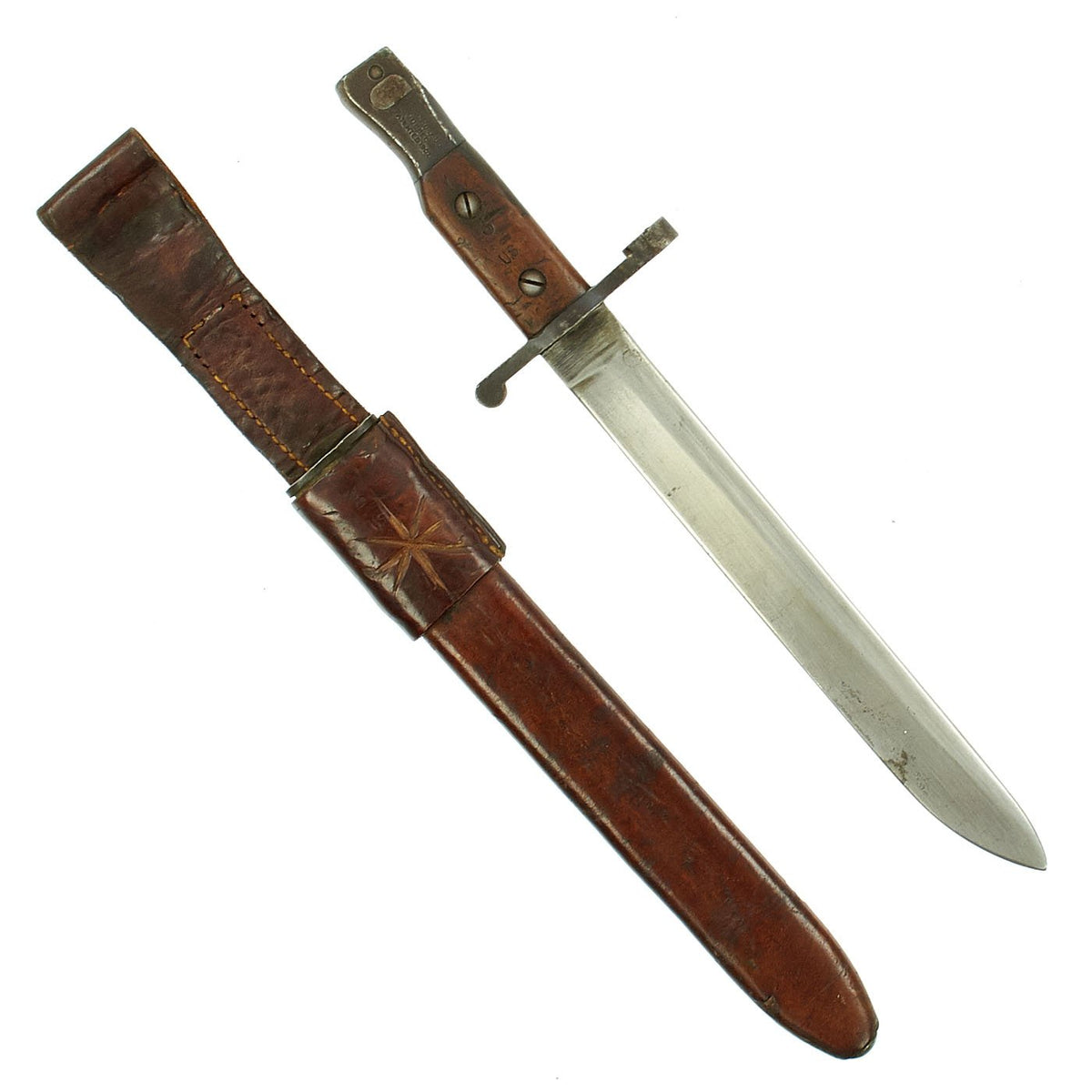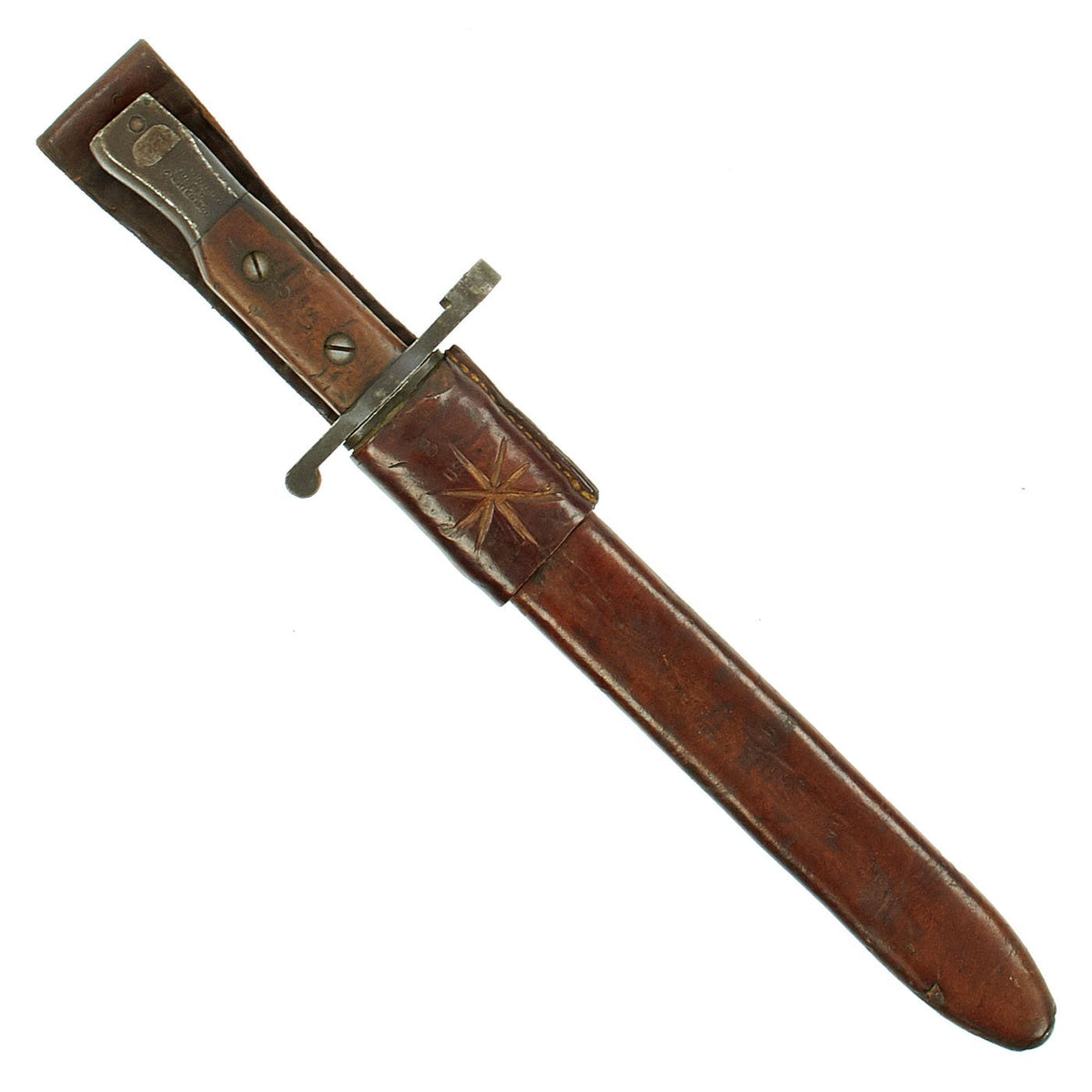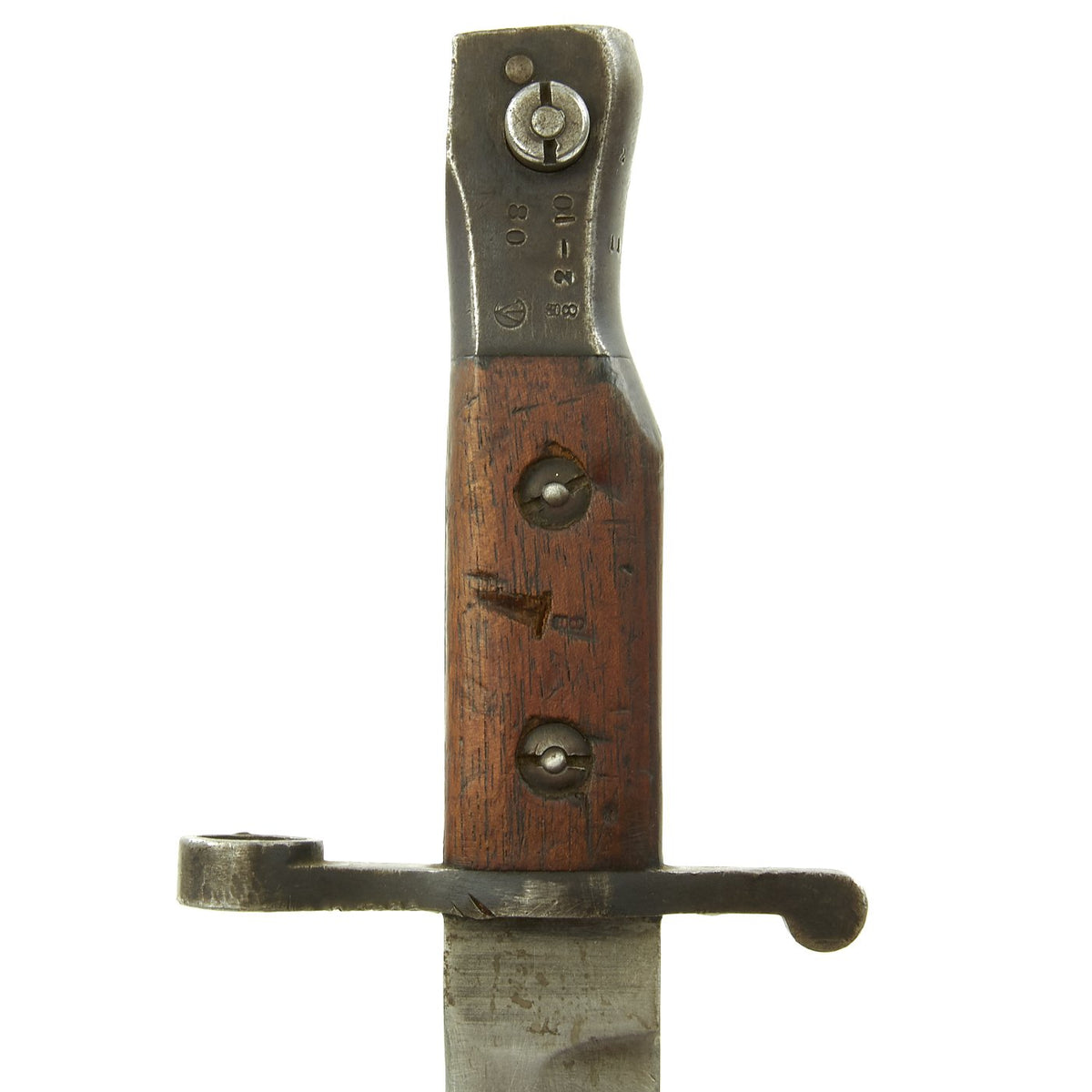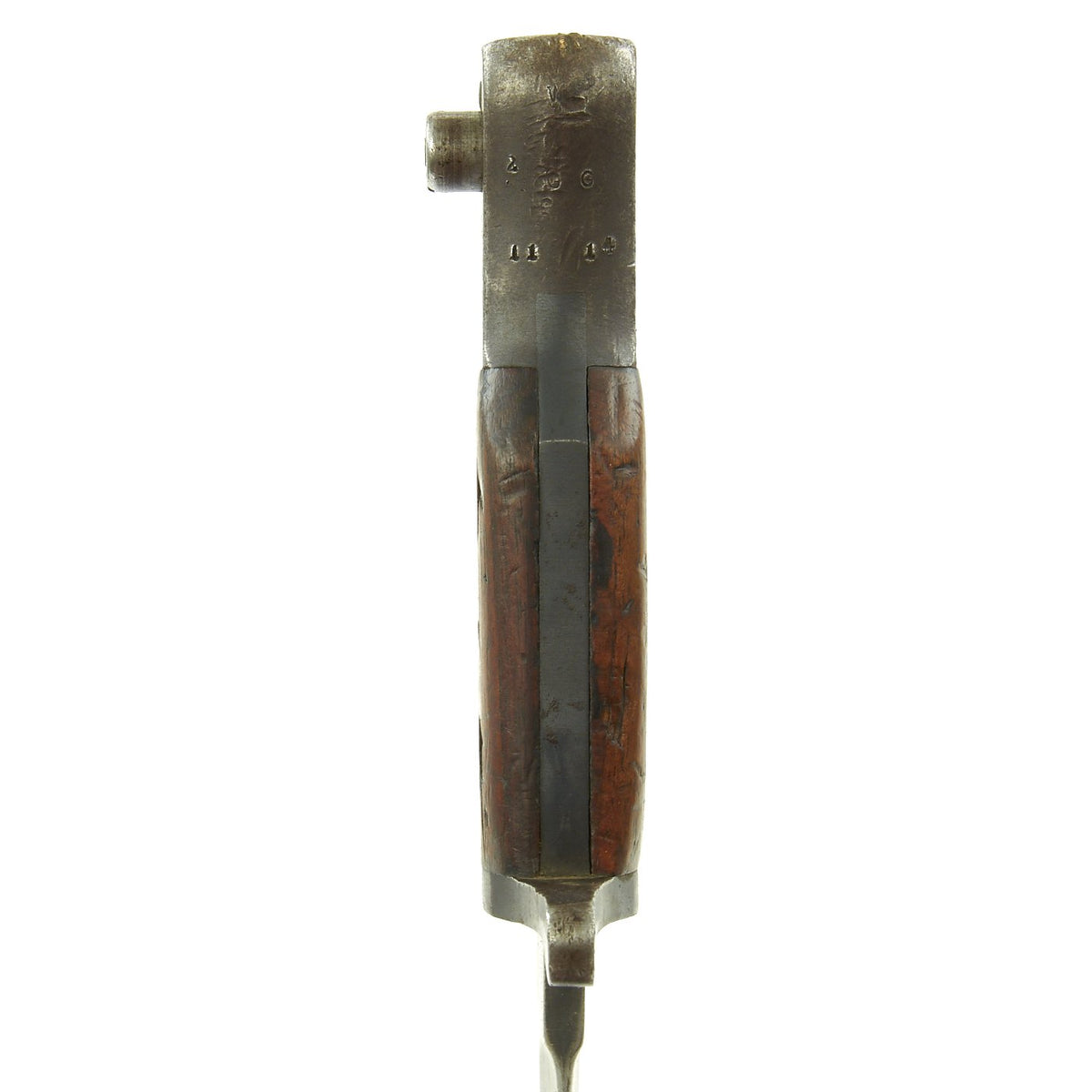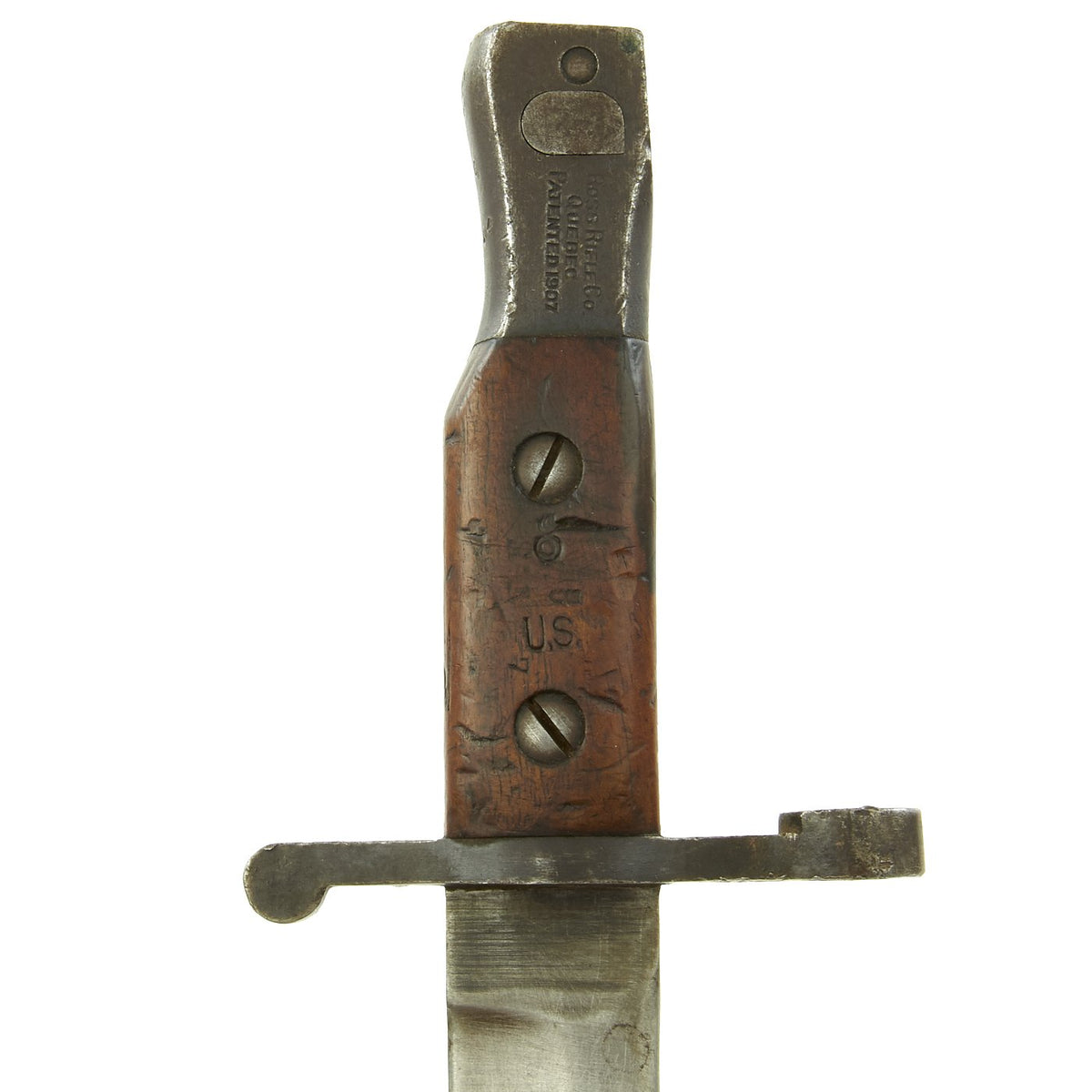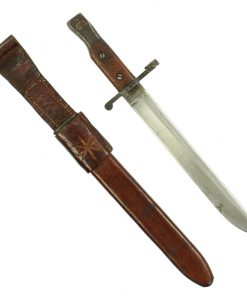Original Canadian WWI Mk.I Ross Rifle Bayonet and Scabbard with U.S. WWI Surcharges – dated 1910 Original Items
$ 250,00 $ 100,00
Original Item: Only One Available. The Ross rifle is a straight-pull bolt action .303 inch-calibre rifle that was produced in Canada from 1903 until 1918. The Ross Mk.II (or “model 1905”) rifle was highly successful in target shooting before World War I, but the close chamber tolerances, lack of primary extraction and overall length made the Mk.III (or “1910”) Ross rifle unsuitable for the conditions of trench warfare, exacerbated by the often poor quality ammunition issued. By 1916, the rifle had been withdrawn from front line service, but continued to be used by many snipers of the Canadian Expeditionary Force until the end of the war due to its exceptional accuracy.
This is an early Mk. I example, with the extended muzzle ring and the pinned pommel, and is in very good condition. A flat spring was inserted inside the muzzle ring to remedy problems with the bayonet separating from the rifle. There are multiple dents / small cuts on the blade side of the guard, so this bayonet may have been used in rifle fencing practice. The bayonet itself is dated 2 – 10 for February of 1910, and has proof and acceptance marks stamped into the wood and steel of the handle. The other side of the handle is marked with the manufacturer information:
ROSS RIFLE Co.
QUEBEC
PATENTED 1907
Many Ross bayonets had their blade profile drastically altered during WW I to provide a sharper point. However, this example is exactly as it left the Ross Rifle Co., Quebec, Canada factory in 1910, and is in very good shape. The original factory grind marks can be seen in areas of the hollow ground blade, though it has been sharpened a bit. IT also does have some staining and light peppering on the bright blade. The lock mechanism functions correctly, and the spring in the barrel ring is still present.
The scabbard for this bayonet is also in very good condition. The top of the throat is marked with a proof mark, and the scabbard’s leather body is stamped with MK. 1 and dated 1915 next to a Canadian broad Arrow on the bottom rear. The scabbard is complete with most stitching intact, and the expected wear to the leather from being over 100 years old. The stitching on the frog has pulled out somewhat around the belt loop end, and the frog was personalized with A.T. on the back, and an 8 pointed star design on the front.
In 1917, the U.S. Government purchased 20,000 Ross rifles and bayonets from Canada. These were intended for use in troop training due to the shortage of rifles and bayonets during the First World War. They were marked with U.S. and the Ordnance Dept. “flaming bomb” acceptance mark. This bayonet and scabbard were both accepted into U.S. Army service, as indicated by the U.S. surcharges on the leather of the scabbard and wood of the grip.
An very example of a rare bayonet, with an interesting history and signs of real use. Ready to add to your collection!
Fast Shipping with Professional Packaging
Thanks to our longstanding association with UPS FedEx DHL, and other major international carriers, we are able to provide a range of shipping options. Our warehouse staff is expertly trained and will wrap your products according to our exact and precise specifications. Prior to shipping, your goods will be thoroughly examined and securely secured. We ship to thousands clients each day across multiple countries. This shows how we're dedicated to be the largest retailer on the internet. Warehouses and distribution centres can be located throughout Europe as well as the USA.
Note: Orders with more than one item will be assigned a processing date depending on the item.
Before shipping before shipping, we'll conduct a thorough inspection of the items you have ordered. Today, the majority of orders will be delivered within 48 hours. The delivery time will be between 3-7 days.
Returns
The stock is dynamic and we cannot completely manage it because multiple stakeholders are involved, including our factory and warehouse. So the actual stock may alter at any time. It's possible that you may not receive your order once the order has been made.
Our policy is valid for a period of 30 days. If you don't receive the product within 30 days, we are not able to issue a refund or an exchange.
You can only return an item if it is unused and in the same state as the day you received it. You must have the item in its original packaging.
Related products
Uncategorized
Uncategorized
Uncategorized
Uncategorized
Armored Burgonet Helmet & Polearm from Scottish Castle Leith Hall Circa 1700 Original Items
Uncategorized
Uncategorized
Uncategorized
Uncategorized
Angolan Rebel 1970s era 60mm Inert Display Mortar from Angolan Civil War Original Items
Uncategorized
Uncategorized
Uncategorized
Armoured Fighting Vehicles of the World: AFVs of World War One (Hardcover Book) New Made Items
Uncategorized
Uncategorized
Uncategorized
Uncategorized
